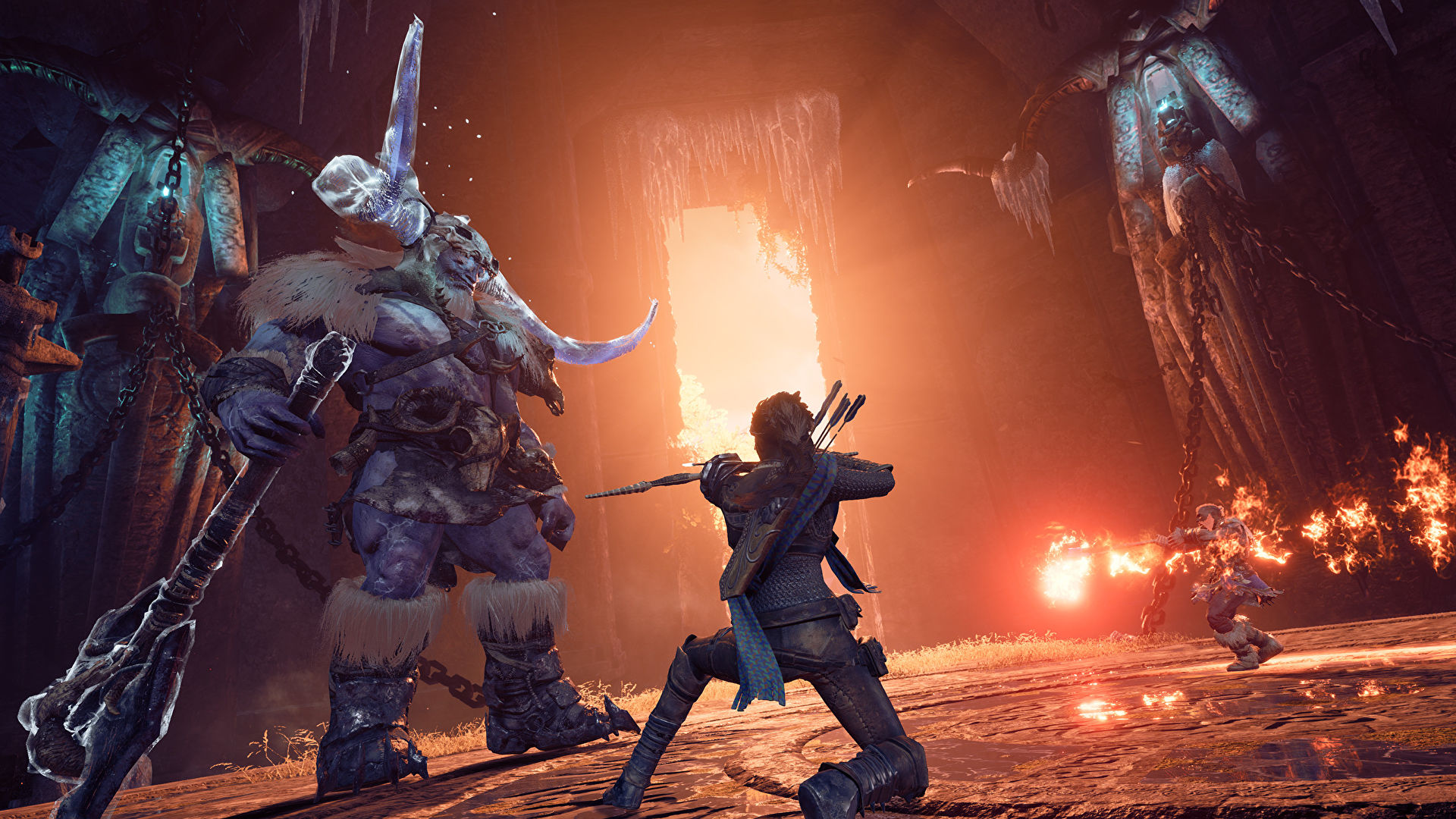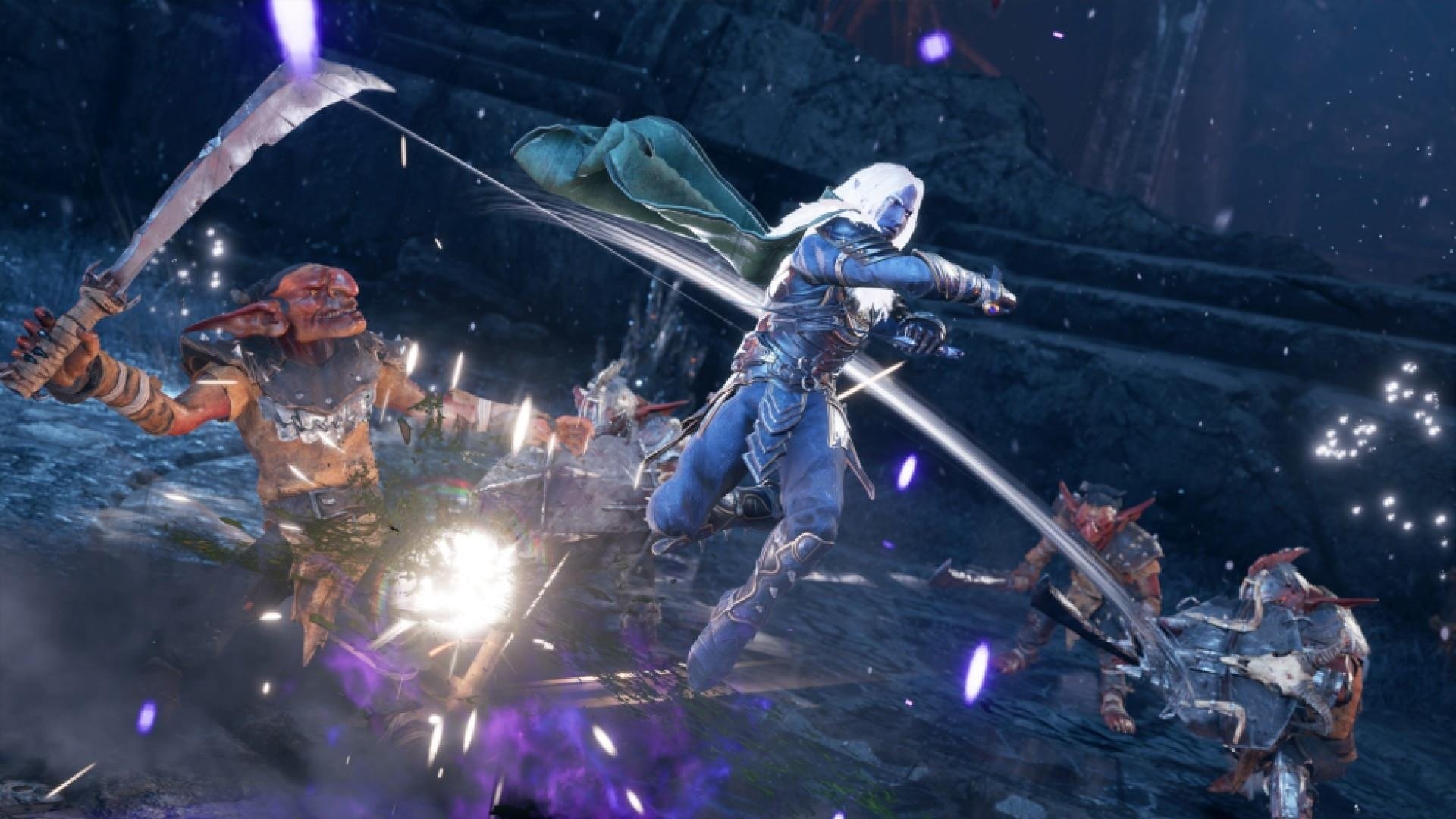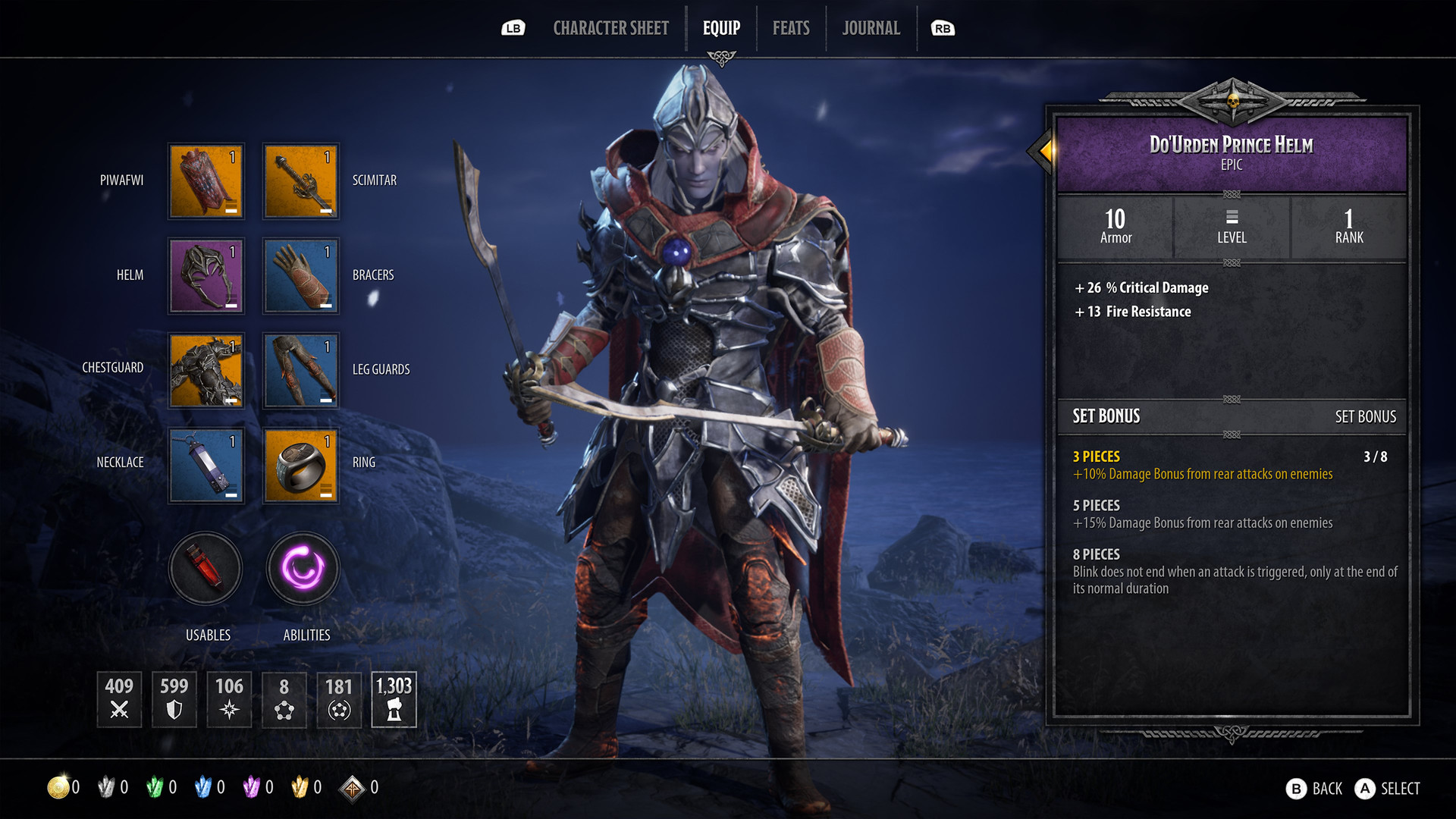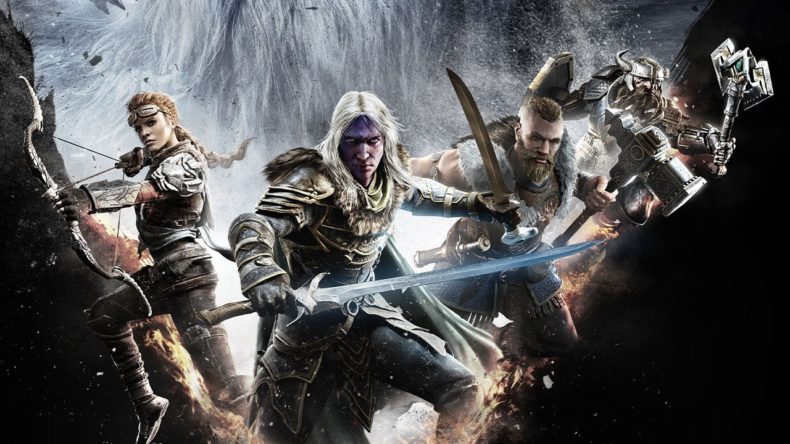June 22, 2021
The most magical thing about playing Dungeons & Dragons is the freedom to create your own story. Whilst you do use sourcebooks and rules created by Gary Gygax and company, your adventures are your own. Outside of official content, few have created stories within the universe that have stood the test of time, or are regarded highly enough to be considered lore. R.A. Salvatore’s The Crystal Shard and Icewind Dale trilogy started something so special. It brought legendary character Drizzt Do’Urden to the masses. Seeing him in Dungeons & Dragons: Dark Alliance is pretty magical, but is it any good?
Dungeons & Dragons: Dark Alliance: slow or methodical combat?
The combat in Dark Alliance is quite sluggish. It’s not as smooth as other third-person RPGs, and it’s more noticeable when playing as the bulkier fighters. Each of the four characters has a different style of fighting. Cattie-brie is good with a bow, and is useful for long range attacks; Bruenor is a surprisingly nimble dwarf who packs a punch in CQC; Wulfgar is a barbarian who moves slow but hits hard; and Drizzt is a master assassin that attacks with a flurry of blows with his knives. I much prefer playing as Drizzt and Cattie-brie because of their speed. Bruenor is also a decent choice, but Wulfgar is too bulky and relaxed.

What makes Dungeons & Dragons: Dark Alliance a decent co-op is the mix of styles. Playing solo is tough, especially with some of the omissions in mechanics. Having others around you helps to clear nearby enemies so that you aren’t overwhelmed. Locking on foes is clunky, and if you’re getting stuck in to a combo, striking the air is more common than it should be. Once an enemy has been taken out, there’s no quick turn or instant lock-on to enemies behind you. I had to jump into the menu and adjust the camera so that turning was quicker. Even after playing with the settings, the pace of combat can still feel slow.
Familiar foes and bags of loot
Every warrior has two attacks mapped to the right shoulder and trigger. You also have a special that can be used, as well as an Ultimate than charges as you fight. Once the gauge is full, a powerful attack is unleashed. They’re all different and relevant to whoever you choose; for example, Drizzt summons his animal companion Guenhwyvar to attack for a short period of time. At first you’re limited to what you can do, but new moves can be unlocked the more you play through the character menu.

There’re plenty of different enemies in Dark Alliance. Anyone who’s played D&D before will be familiar with Frost Giants, Duergars, and Ogres. Missions are chosen from the hub area (more on that shortly), and from there you dive into the starting zone. Each level has various objectives for you to complete. Along the way, you’ll fight swathes of enemies, unlock doors or destroy obstacles, and take on bosses. The deeper you go, the better the loot. The tougher the enemy, the rarer the item. Loot hunters will enjoy how much is available for your character of choice.
Dungeons & Dragons: Dark Alliance: Always look sharp
Before each mission, players spend time in the hub area upgrading weapons and armour using crystals and gold found during missions. If you’re willing to explore every area during a mission, there’re plenty of crystals and gold to be found. Each crystal has a rarity. The better it is, the higher your item’s stats can be improved. Every piece of armour can be upgraded, and some can even change appearance for the small price of gold. Whilst it may not be the best game visually, it has that addictive loot cycle. Whenever you find something new during a mission, you’ll be excited to get back to the hub and try it on.

If you can manage to unlock an entire set of armour (often found over the course of a mission’s three Acts), there are bonuses for doing so. The more items you own in the set, the better the bonus. Characters also have Feats which can be unlocked as you play, such as improvements to HP and how much gold is dropped by enemies. There’s enough to keep you busy, but it just depends on whether the gameplay satisfies you.
Much better with friends
Dungeons & Dragons: Dark Alliance has a relatively deep level of customisation. Gear can be upgraded and found across the whole of Icewind Dale. Enemies are tough, and can be made tougher if you up the challenge rating to earn more stuff out in the field. Playing on your own is pretty dull. Due to how characters play off each other, it’s best-suited as a co-op experience. Although there are some issues with targeting enemies and managing how you fight, I still liked squaring off against the different monsters.
Whilst the combat is heavy and not as fluid as other games in the genre, it still has plenty of variety in how you can attack. If you’re planning on playing with friends, there’s plenty to enjoy. Defeating a boss can feel incredibly satisfying, and reaping the rewards is one of the best things about Dark Alliance. It is by no means one of the best co-op multiplayers on the market. Games such as Outriders does it much better, but for fans of D&D, there’s a lot of nice Easter Eggs and references to the table top game to enjoy.
Plenty of loot
Nice blend of characters and fighting styles
D&D fans will love it
Sluggish combat
Hard on your own
Dungeons & Dragons: Dark Alliance is much better with friends. There's loads of loot and fun to be had, but combat is quite sluggish.





